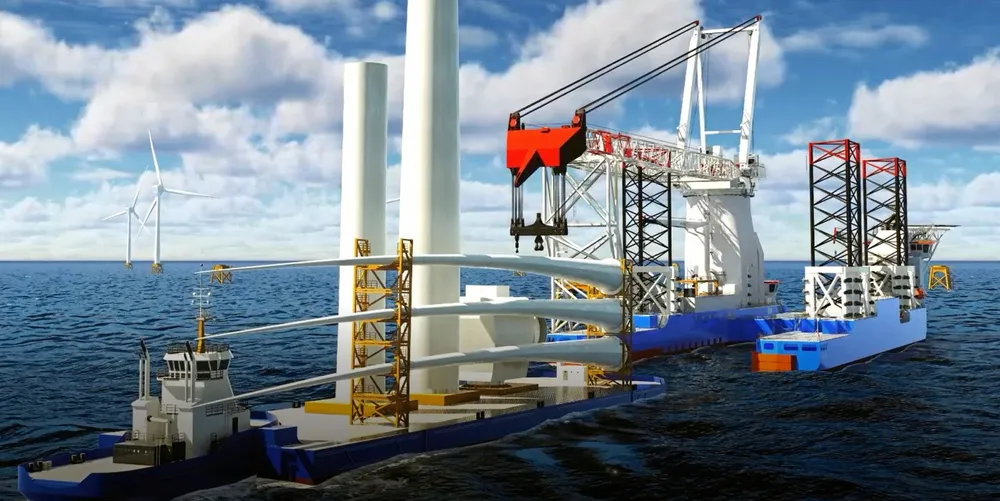New-look offshore wind construction concept floated to uncork looming US bottleneck
'Feederdock' system, which uses a U-shaped crane vessel that docks-in tug barges shuttling turbine components out from coastal yards, will be '25-30% faster' than traditional installation vessels, say its developers
